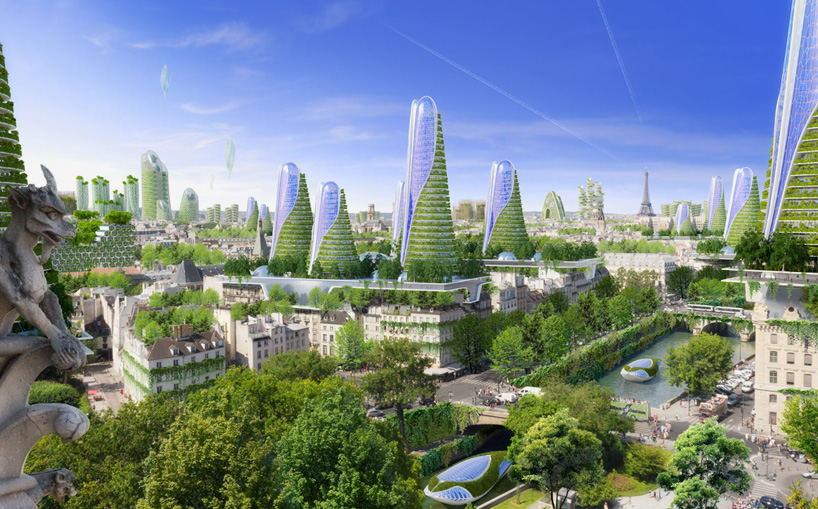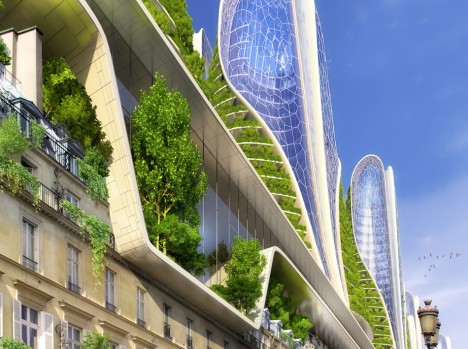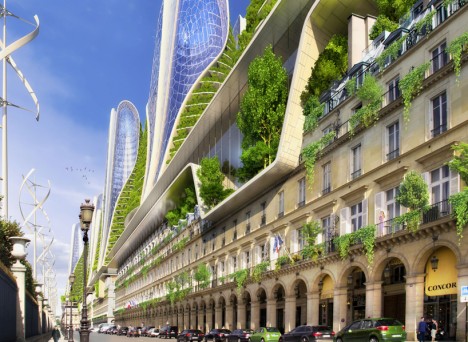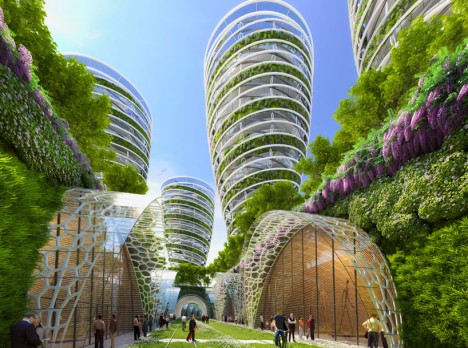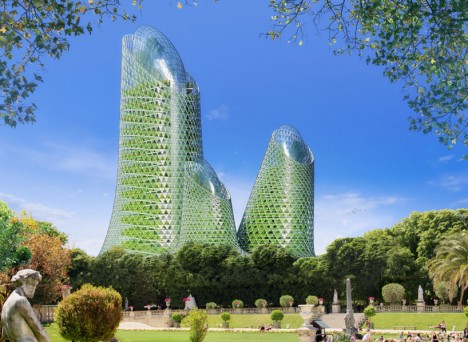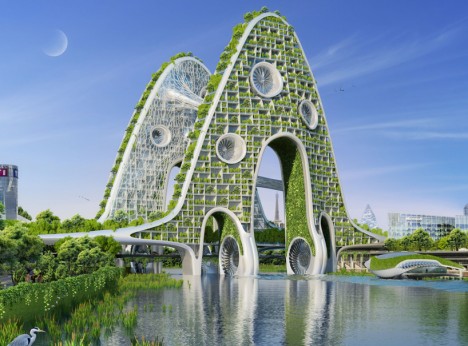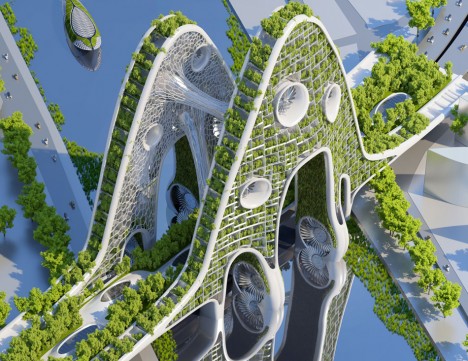Exploring eco-friendly strategies for cities, this series of conceptual ‘Smart Tower’ skyscrapers and mid-rise structures incorporates design elements to reduce pollution, create renewable energy and yet also integrate with existing built environments.
Designed by Vincent Callebaut Architectures, each of these typologies is set in Paris – many draw on local elements in practice, but in theory all are conceived of as having broader potential applications in urban contexts around the world. The idea, in essence, is to work with what is already in place, tapping underutilized elements for structural support or to provide a basis for further development.
The proposals, named and detailed below, vary in their realism but are intended to provoke discussion and brainstorm possibilities, helping planners consider new ways to adapt existing buildings and infrastructure for cleaner and greener use in the near future.
Mountain Towers: supported by the unused chimneys of existing buildings below, these power-generating additions draw solar energy and use a reversible hydro-electrical pumped storage system to pull up and send down hot water.
Antismog Towers: set along disused rail lines, this piece of the project combines cycling paths and urban gardens with cyclonic towers to clean the air and wind turbines to generate electricity.
Photosynthesis Towers: incorporating green algae bioreactors into existing tall buildings (a particular extant set deemed visually unfit by city officials), this conversion project turns adjacent open space into a phyto-purification lagoon for graywater runoff but also transforms an eyesore into an eye-catching hybrid of landscape and architecture.
Bridge Towers: connecting across urban waterways, these river-spanning structures provide a combination of water power, bridge infrastructure and living space, organically morphing between energy-generating apparatus and livable buildings.
